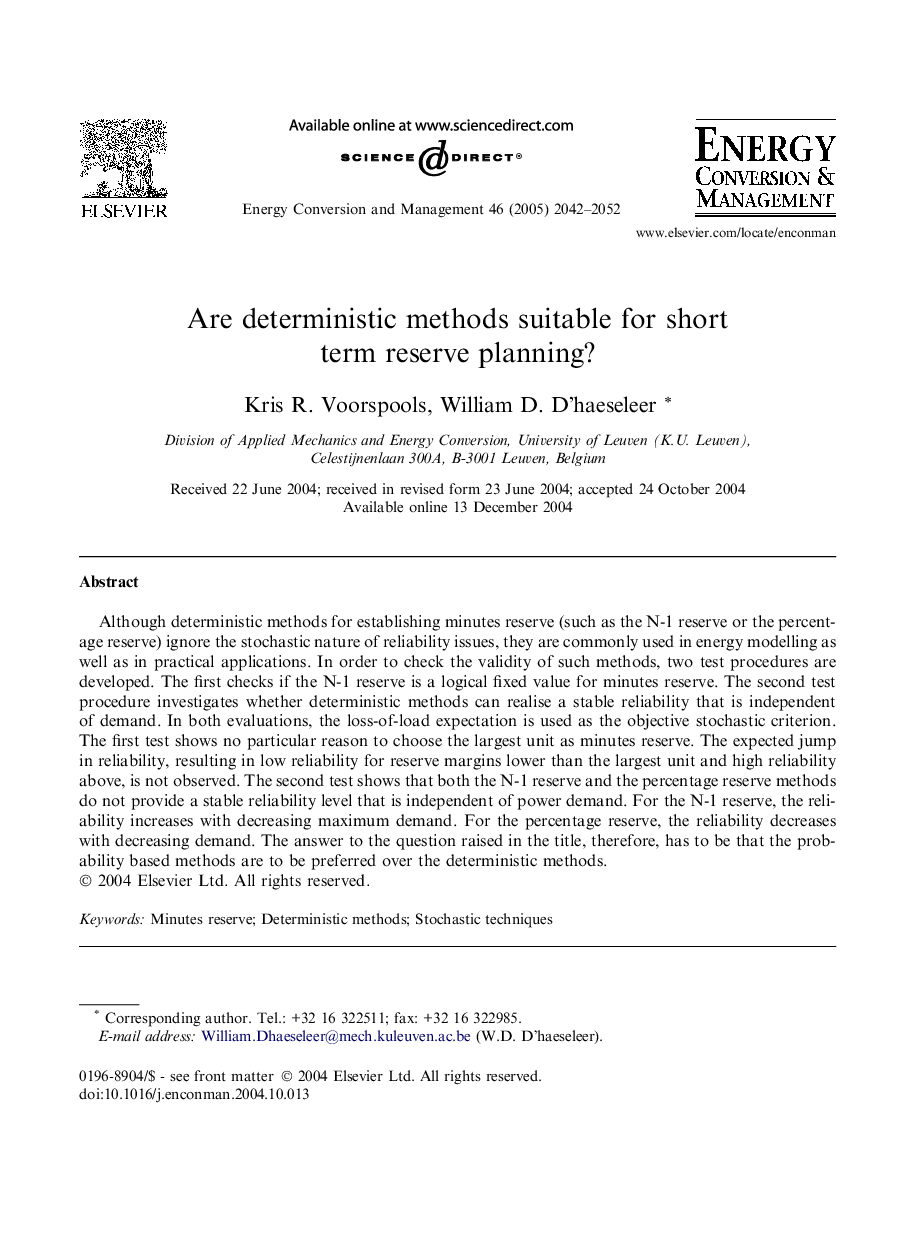| Article ID | Journal | Published Year | Pages | File Type |
|---|---|---|---|---|
| 773182 | Energy Conversion and Management | 2005 | 11 Pages |
Although deterministic methods for establishing minutes reserve (such as the N-1 reserve or the percentage reserve) ignore the stochastic nature of reliability issues, they are commonly used in energy modelling as well as in practical applications. In order to check the validity of such methods, two test procedures are developed. The first checks if the N-1 reserve is a logical fixed value for minutes reserve. The second test procedure investigates whether deterministic methods can realise a stable reliability that is independent of demand. In both evaluations, the loss-of-load expectation is used as the objective stochastic criterion. The first test shows no particular reason to choose the largest unit as minutes reserve. The expected jump in reliability, resulting in low reliability for reserve margins lower than the largest unit and high reliability above, is not observed. The second test shows that both the N-1 reserve and the percentage reserve methods do not provide a stable reliability level that is independent of power demand. For the N-1 reserve, the reliability increases with decreasing maximum demand. For the percentage reserve, the reliability decreases with decreasing demand. The answer to the question raised in the title, therefore, has to be that the probability based methods are to be preferred over the deterministic methods.
